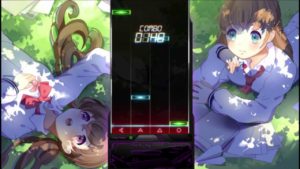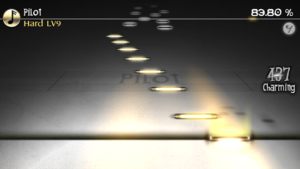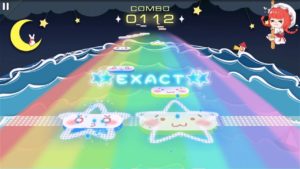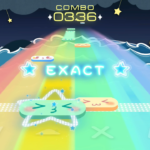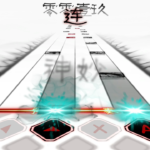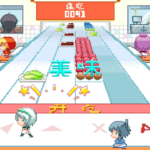I’m always at odds with myself when trying to recommend a Japanese, or Korean rhythm game to people. Not because I doubt the ability of my friends to comprehend the onrush of colored symbols that threaten to overtake the screen at any given moment, but for a far more obscure reason:
I always feel ridiculous when saying their names aloud.
Unlike the American games that popularized themselves here, whose creators choose to simply have their intentions spelled out clearly in the title (Guitar Hero, Rock Band, Just Dance), rhythm games overseas seemingly have a hidden agenda to obliterate the tongue of any who dare say their name. For any brave enough to ask, I could rattle off a bunch of names at will: Dance Dance Revolution, PUMP IT UP: Exceed, Osu! Tatakae! Ouendan! As fondly as I remember the experience of each, I can equally measure just how confused someone will be at the very mention of their names.
As for me, having been immersed in the rhythm genre since Parappa was rapping has indoctrinated me to the point where I barely notice it anymore. Also, since the conclusion of the latest American rhythm games era, overseas games have been enjoying a relatively popular run, especially on portable platforms.
Upon browsing the Switch’s eShop, (which I highly recommend) the rhythm category yields the usual roster of tongue twisters. Deemo, Voez, (I still don’t know the exact pronunciation for this one), Superbeat: XoNIC, and the very subject of this review, a shining example of linguistic obliteration, Musynx.
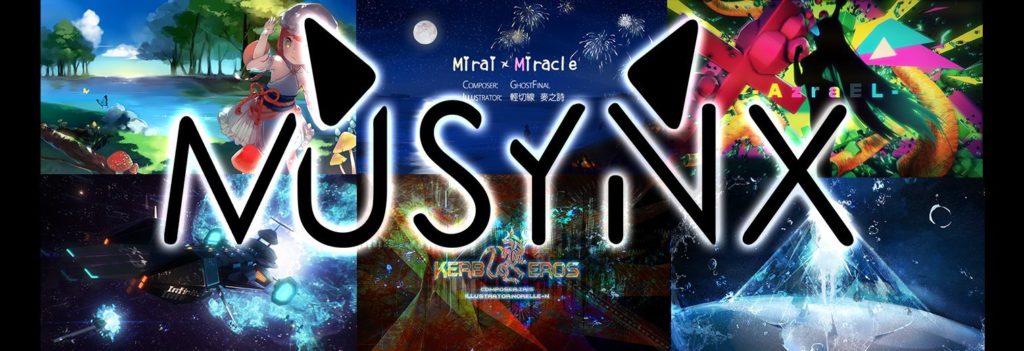 Pronounced “MEW-SINKS”. Yeah. We know.
Pronounced “MEW-SINKS”. Yeah. We know.Stay classy, rhythm genre.
An unapologetically lame portmanteau of music and sync, Musynx (stylized as MUSYNX) is the second game released for the Nintendo Switch by developer PM Studios, which was in turn formed by the developers behind the popular DJMAX franchise.
When Musynx was originally released, it was known as MUSYNC, a game by developer I-Inferno for the now-defunct Playstation Mobile service that upon its release, bore more than a passing resemblance to DJMAX. If that isn’t strange enough on its own, before the PS Mobile service was shut down in 2015, MUSYNC was ported to iOS and Android, with a complete visual overhaul, this time shedding its DJMAX-inspired roots, and instead becoming very similar to another popular mobile rhythm game: Deemo. This latest game was different from the pack in that it would ditch the familiar note lanes for a more open-ended, piano-like structure. MUSYNC in turn, followed suit and found that it could capture a similar audience.
Seeing a pattern here?
This isn’t to say that MUSYNX is derivative, but that ALL of these rhythm games are feeding off of each other’s ideas, and all have manage to coexist despite and perhaps because of this. For the end user, picking up and playing a game within this genre is fairly effortless if you’ve played even one of them. Match the beats, the song plays, and the visual/aural feedback loop takes care of the rest. It’s strange kind of magic, and the very root of what makes these games so addictive, as your performance doesn’t just lead to a high score, but also to a song that sounds like it was para-composed by you to perfection.
In the end however, what makes each title stand out despite these similarities, are the musical and visual styles that make each of them unique, and it’s here that MUSYNX has a unique conundrum. It already has two previous identities separated by platform, and hardware, and has been known to switch trends as they present themselves. I think that the best question going into the new Switch port of MUSYNX is, did its identity change again upon arriving on the Switch, or did it remain the same? Given that it evolved to suit each platform it was on, from buttons to touchscreen, would the same shift happen on a console with both options.
The answer is simultaneously a disappointing, and reassuring yes. The long answer being, MUSYNX did evolve again on its journey to the Nintendo Switch, and while the experience is indeed unique to the platform, it really only falls short when you compare it to what was released before.
It’s clear from the onset that MUSYNX on console wants to be as simple and accessible as possible in order to draw in new players. From the second the game loads, you’re thrown immediately into an animated title screen, and instantly whisked into the main menu, where there are 96 songs available from the start. Because the game is $24.99 USD, when compared to the 36 tracks you get in the mobile version for $0.99 (the rest being tied to microtransactions), it’s actually not a bad deal by comparison. The songs themselves are a collection of a wide variety of musical genres, from high energy ballads that wouldn’t sound out of place in the intro to an anime, to lean futuristic synth pop, or for the adventurous, the kind of hard-hitting techno that’s usually reserved for the upper difficulty levels.
Better still, each genre change inspires a unique visual motif for the music being played. Peppy, upbeat songs, like the Sailor Moon-esque “Twinkle Star” have a sunny, beachlike theme, where the solemn, dramatic “ICEY” have a futuristic vector background reminiscent of a TRON landscape. The highly animated backgrounds almost threaten to make the falling note charts unintelligible, but they’re easy enough to read, adding to their charming wackiness. A personal favorite would be the one where 8-bit chibi characters scrambling to collect sushi platters as they slide down a counter.
The screenshots already give it away, but MUSYNX on the Switch follows neither the touch screen tappings of it’s mobile version, or even the strict, static nature of it’s humble DJMAX-like beginnings. Instead, it’s a strange hybrid of both, with strict four and six note tracks that activate when the buttons labeled at the bottom of the screen are tapped in tune, and simply screen tapping the lanes replaces the buttons if used in tablet mode.
This begs the question: Why not have the game operate with the freedom of the touch screen in tablet mode, and switch to lanes whenever a JoyCon was connected? The opportunity to have an “Ultimate” version of MUSYNX was within reach, and they didn’t take the bait, like genre cousins Voez and Deemo when they transitioned from F2P mobile to Switch with bonus added features.
Don’t get me wrong, the game is still a load of fun, and the core of what made it great is still at the center of the game’s pulse when all is said and done. Notes are either tapped, or held in order to score points (with bonuses for accuracy), and while the game is a bit of a pushover in its Normal difficulty setting, Hard is where the magic truly lies. Somehow, in the game’s “HD” setting, the note patterns, and holds seem perfectly placed over the multiple audio tracks in each song, and the game effortlessly bounces between them in a way that’s intuitive, and fun to play.
If only it had carried over the stellar visuals, it could’ve been sublime. While the Switch version is still visually accomplished, and the new note charts are well thought out, it just doesn’t have the same “pop” that the mobile version has, instead settling for a more static look. As far as raw challenge goes, it’s nearly the same, but that visual kick, that feeling of soaring through these lively, animated tracks is what truly separated MUSYNX from its competition. It’s a shame to see it dialed back in this specific way, since that wild visual unpredictability would lead into some really intense sequences, but it isn’t a deal breaker.
Really, the only true point of contention is that despite the game’s massive tracklist, catchy songs, and well laid out charts, there isn’t much to do beyond that. Unlike its contemporaries, which tend to add in some kind of narrative to push things along, or a suite of unlockables tied to some sort of mission mode, MUSYNX is entirely about the music, and nothing more. With everything unlocked from the start, there’s really not much to do other than play the game to perfection, the game’s letter grade system being as encouraging as it is harsh. There is also a DLC store similar to the one found in the mobile version, presumable for extra tracks, but as of this writing, it hasn’t been populated with any content.
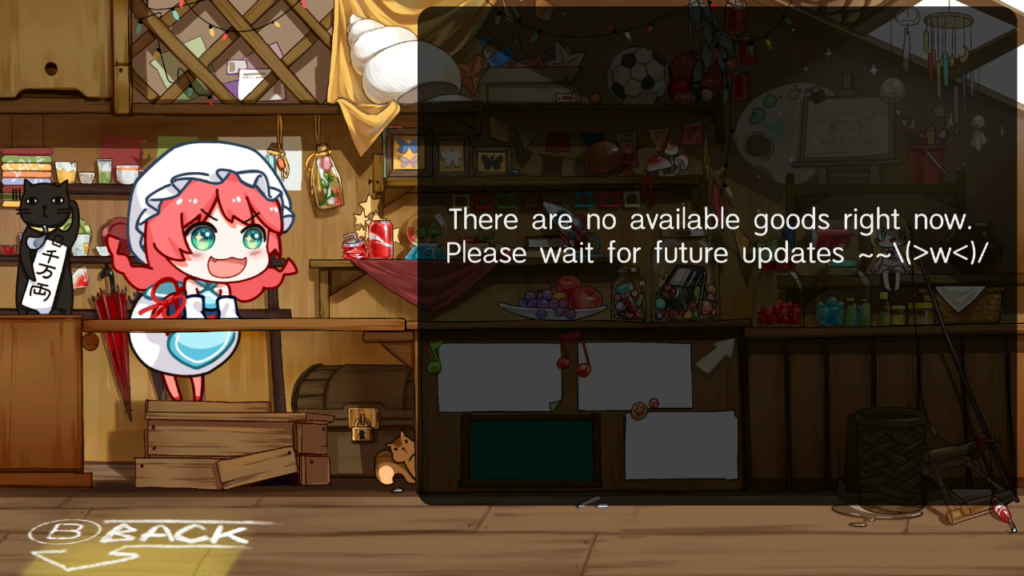 Please notice us, PM Studios.
Please notice us, PM Studios.While a stripped down version of a game is usually cause for concern, the way PM Studios handled the Switch version of MUSYNX is unexpected, but it still manages to be a worthy successor in its own right. Though simplified, and a bit bare-bones in its presentation outside of the tracks themselves, at $24.99, one could do a lot worse for what is essentially the price of several albums. Even if it doesn’t quite reach the highs of the version that preceded it, there is at least an attempt to make something unique and fun for rhythm fans itching for a new way to annihilate their controllers, and in that respect, they succeeded.
I’m still going to feel like a goof recommending it to you aloud, though.
(Nintendo Switch version reviewed; Also available on Mobile, PS4, and PS Vita)



